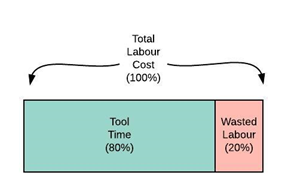Should First Responders Use the Scoop Stretcher or the Spineboard?
by admin, on Oct 17, 2018 3:30:00 PM
Comparing the Ferno 65 EXL Scoop Stretcher to Traditional Extrication Boards
When conducting rescues and transporting patients it’s important to choose the right equipment for the job. Determining whether to use the traditional extrication board (previously known as the spineboard) or the Ferno 65EXL scoop stretcher in a given situation depends on the specific challenges of the situation along with an understanding of acceptable standards, as well as some personal preference on the part of the first responder.
The Extrication Board
The extrication board, or spineboard, has been around for many years and been used by all types of responders – fire crews, search and rescue, ambulances, life guards, industrial rescue services, etc.  It’s a proven, effective piece of equipment, but in recent years the terminology and guidelines for these devices has changed and these days the extrication board is primarily used specifically for extrication – i.e. immobilizing a patient to extricate them from a narrow space. The cocooning effect of this board makes the extrication process easier, but this board is rigid and uncomfortable for the patient, with spider straps that are effective but take some time to secure.
It’s a proven, effective piece of equipment, but in recent years the terminology and guidelines for these devices has changed and these days the extrication board is primarily used specifically for extrication – i.e. immobilizing a patient to extricate them from a narrow space. The cocooning effect of this board makes the extrication process easier, but this board is rigid and uncomfortable for the patient, with spider straps that are effective but take some time to secure.
In BC, paramedics only use extrication boards in situations that call specifically for extrication or if scoop stretchers are unavailable (i.e. on a rescue operation with out-of-date equipment or where other patients are using available scoop stretchers). The extrication board should be removed as soon as the patient is placed on a stretcher unless the patient requires full spinal immobilization.
The Ferno 65EXL scoop stretcher
In the majority of medical response situations the outdated extrication board has been replaced by the Ferno scoop stretcher. This stretcher is a straightforward, quick-use device that can slide under the patient with minimal movement.  The length of the scoop stretcher is adjustable according to the patient’s height, and the board comes in two halves with latches at the head and foot end. Criss-crossing straps and buckles can be done up in a less than a minute.
The length of the scoop stretcher is adjustable according to the patient’s height, and the board comes in two halves with latches at the head and foot end. Criss-crossing straps and buckles can be done up in a less than a minute.
The scoop stretcher is primarily used as a lifting device and is easy to remove once the patient is on the stretcher. It has recently been proven that in certain situations full spinal immobilization is more harmful than allowing a patient a range of motion, so recent Canadian C-Spine and Nexus regulations stipulate that unless a patient has deficits, numbness, an obvious spinal injury, has lost consciousness or has suffered a major distracting injury, they should not be kept on a spineboard or scoop stretcher any longer than necessary.
Which one should I choose?
The Ferno scoop stretcher is more of a lifting device, while the extrication board is better for use where there may be stairs or narrow spaces (such as an industrial site). There are also practical differences in how the two devices are applied. The extrication board comes with the spider straps which must be unrolled on top of the patient and then secured, and rolling the patient onto the board can be uncomfortable depending on the extent or type of their injuries. On the Ferno scoop stretcher, straps and buckles remain attached and the scoop structure provides patient with more comfort throughout the process. Additionally, the scoop stretcher can be secured much quicker than the extrication board, and saving time can be critical when dealing with serious first aid injuries.
The scoop stretcher is the preferred device among BC paramedics for most situations. There is no need to roll the patient over, as the stretcher easily separates into two halves to scoop up the patient, and the process is generally much more streamlined than with the extrication board. However, in rescue situations the extrication board is the better choice as it holds the patient better as one unit, which allows rescuers to pivot the board sideways and upright through narrow spaces. Most importantly, when choosing between the extrication board and the Ferno 65 EXL scoop stretcher, rescuers should assess the specific needs of each situation and select their equipment accordingly.
.png?width=162&height=64&name=IRWINS%20website%20logo%20(1).png)